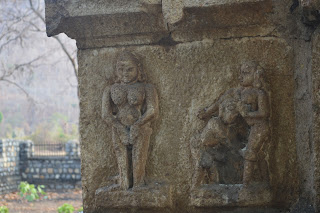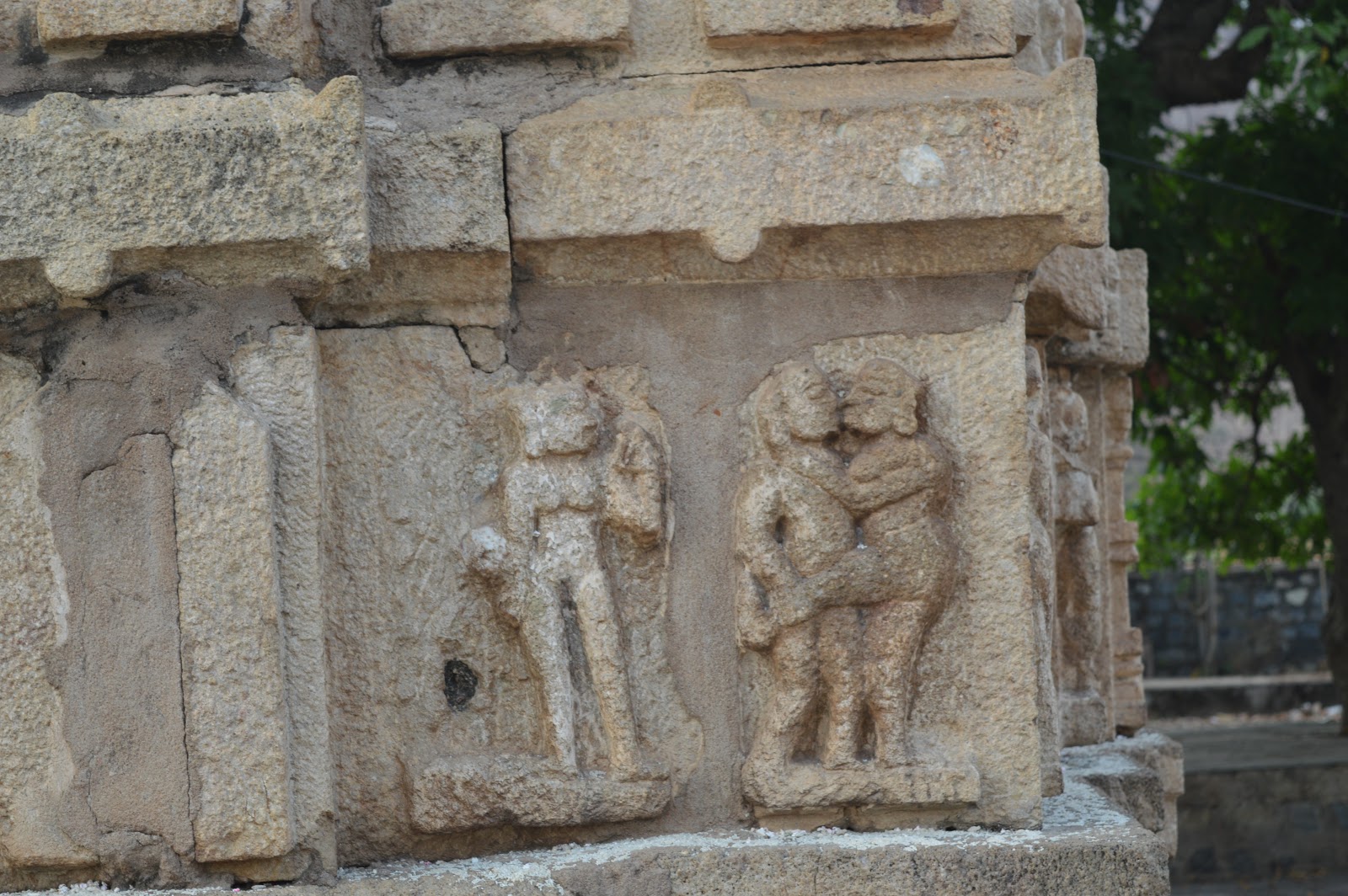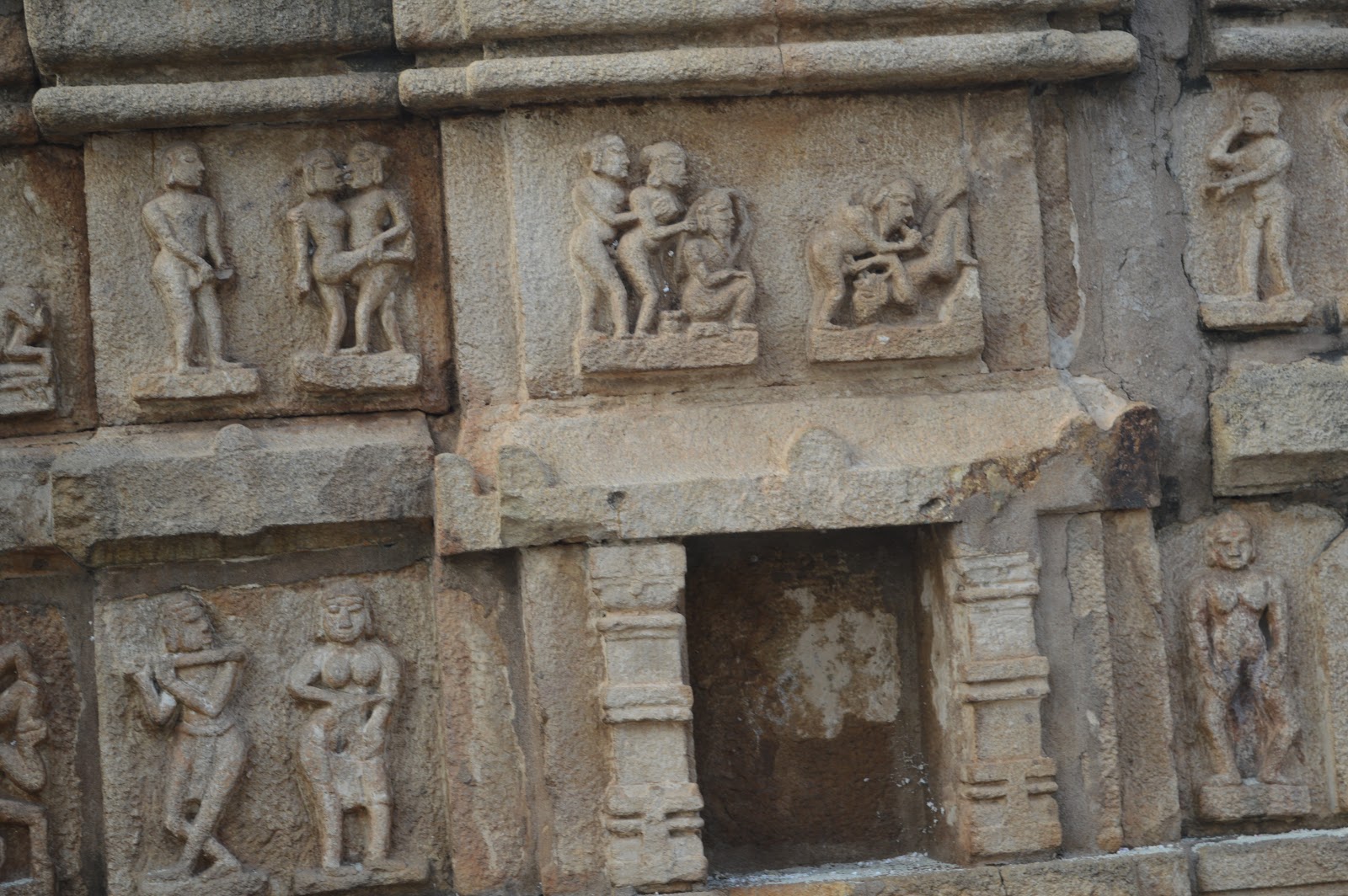Istaliq temple
The Istaliq temple or the temple built with dried or burnt clay
bricks adjoins the main Bharamdeo temple. It was the first temple built
between 2nd and 3rd centuries. This temple, in a dilapidated condition.
has only a sanctum sanctorum without an entrance hall or mantap. The
tower above the sanctum sanctorum is extant only to half its height.
There is wall projecting out of this temple which is known as "Allinda".
Other existing structural features seen in the sanctum sanctorum are a
few sculpted pillars. A sculpted Shiva Linga is deified here along with
images of Uma Maheswar and of the king and queen standing in a
worshipful pose.
[3]
Open-air museum
There is an open-air museum within the temple complex which has a
large collection of archeological antiquaries unearthed from the area,
which are dated to 2nd and 3rd centuries.
[6] A particular find on display is of
Sati pillars, which have unique architectural motif in which couples are carved in squatting amorous postures called the "
alingana-mudra".
[2]
There are also many slabs (stelles), with one stele in particular
carved with a sword as a commemorative slab, and images of Uma Maheswar.
Other collections on display in the courtyard are: Many dilapidated
images; friezes of Nandi and Linga; and on the northern part of the
courtyard a temple made of bricks in a ruined state. A recently built
temple washed in redcolour with the deity
Hanuman, is also seen on one side of the courtyard. A draped
Kal Bhairava sculpture is also seen in the complex at its exit end.
[5]
























































